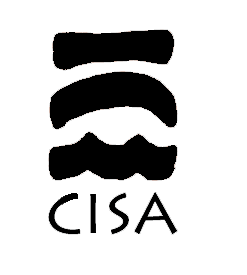UPCYCLING OF BORO-ALUMINO-SILICATE PHARMACEUTICAL GLASS IN SUSTAINABLE CONSTRUCTION MATERIALS
- Giulia Tameni - Department of Industrial Engineering and RU INSTM, University of Padova, Italy
- Francesco Cammelli - Department of Industrial Engineering and RU INSTM, University of Padova, Italy
- Hamada Elsayed - Department of Industrial Engineering and RU INSTM, University of Padova, Italy - Refractories, Ceramics and Building Materials Department, National Research Centre, Egypt
- Francesco Stangherlin - Terreal Italia Srl, Italy
- Enrico Bernardo - Department of Industrial Engineering and RU INSTM, University of Padova, Italy
- Available online in Detritus - Volume 20 - September 2022
- Pages 17-21
Released under CC BY-NC-ND
Copyright: © 2022 CISA Publisher
Abstract
The present Covid-19 emergency has dramatically increased the demand for pharmaceutical containers and the amounts of related waste. This paper aims at presenting the upcycling of discarded pharmaceutical glass into various porous ceramics, starting from the activation of fine powders suspended in weakly alkaline solutions (2.5 M NaOH/KOH). The alkaline attack determines the gelation of glass suspensions, according to hydration of glass surfaces, followed by condensation starting from 40 °C (‘cold consolidation’). Alkali are mostly expelled from the gel, according to the formation of water-soluble hydrated carbonates. The mutual binding of activated powders was exploited for the encapsulation of waste-derived glass (from the plasma processing of municipal solid waste) and quartz sand as coarse aggregate. Moreover, industrial mud could be used instead of water in the preparation of alkaline solutions. Depending on the formulations, products comparable to facing bricks can be obtained directly after cold consolidation or after application of low temperature (700 °C) firing. In addition, selected formulations led to highly porous glass foams, to be used for thermal and acoustic insulation.Keywords
Editorial History
- Received: 17 Jun 2022
- Revised: 01 Sep 2022
- Accepted: 15 Sep 2022
- Available online: 20 Sep 2022
References
Bernardo, E., Scarinci, G., 2004. Sintering behaviour and mechanical properties of Al2O3 platelet-reinforced glass matrix composites obtained by powder technology. Ceram. Int. 30, d785. 10.1016/j.ceramint.2003.09.013
Cyr, M., Idir, R., Poinot, T., 2013. Properties of inorganic polymer (geopolymer) mortars made of glass cullet. J. Mater. Sci. 47, 2782.
DOI 10.1007/s10853-011-6107-2
El-Egili, K., 2003. Infrared studies of Na2O–B2O3–SiO2 and Al2O3–Na2O–B2O3–SiO2 glasses. Phys. B: Cond. Mat. 325, 340.
DOI 10.1016/S0921-4526(02)01547-8
Provis, J.L. 2014. Geopolymers and other alkali activated materials: why, how, and what?. Mater Struct 47, 11–25.
DOI 10.1617/s11527-013-0211-5
Rincón, A., Marangoni, M., Cetin, S. Bernardo, E., 2016. Recycling of inorganic waste in monolithic and cellular glass-based materials for structural and functional applications. J. Chem. Technol. Biotechnol. 91, 1946.
DOI 10.1002/jctb.4982
Rincón, A., Giacomello, G., Pasetto, M., Bernardo, E., 2017. Novel ‘inorganic gel casting’ process for the manufacturing of glass foams. J. Eur. Ceram. Soc. 37, 2227.
DOI 10.1016/j.jeurceramsoc.2017.01.012
Scanarc, 2017. Scanarc [WWW Document]. http://www.scanarc.se/ (Accessed November 2017)
Taveri, G., Tousek J., Bernardo E., Toniolo N., Boccaccini A.R., Dlouhy I., 2017. Proving the role of boron in the structure of fly-ash/borosilicate glass based geopolymers. Mater. Lett. 200, 105-108.
DOI 10.1016/j.matlet.2017.04.107
Toniolo, N., Rincón, A., Roether, J.A., Ercole, P., Bernardo, E., Boccaccini, A.R., 2018. Extensive reuse of soda-lime waste glass in fly ash-based geopolymers, Constr. Build. Mat. 188, 1077.
DOI 10.1016/j.conbuildmat.2018.08.096
Winterstetter, A., Laner, D, Rechberger, H., Fellner, J., 2015. Framework for the evaluation of anthropogenic resources: A landfill mining case study – Resource or reserve? Res. Cons. Recycl., 96, 19-30
DOI 10.1016/j.resconrec.2015.01.004




